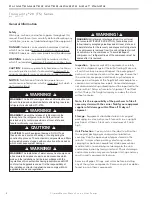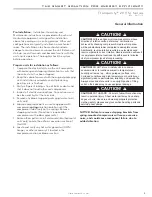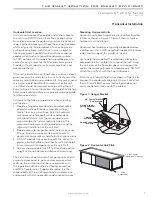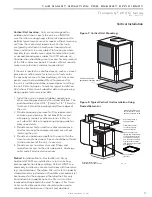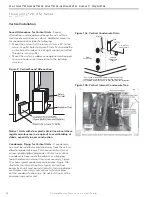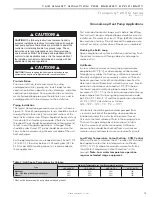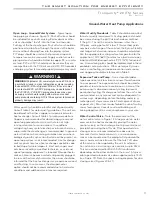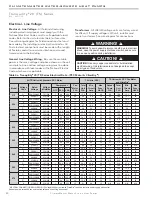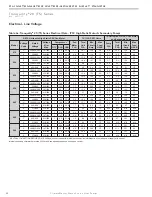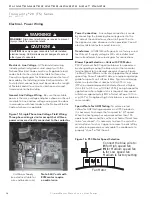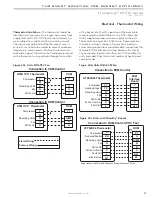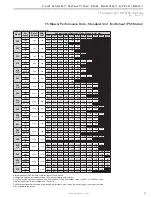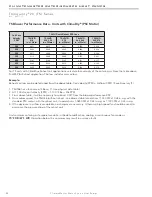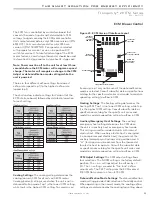
18
C l i m a t e M a s t e r W a t e r- S o u r c e H e a t P u m p s
C L I M A T E M A S T E R W A T E R - S O U R C E H E A T P U M P S
Tr a n q u i l i t y
®
2 0 ( T S ) S e r i e s
R e v. : 0 6 / 1 7 / 1 5
Figure 14: Typical Open Loop/Well Application
Pressure
Tank
Shut-Off
Valve
Boiler
Drains
Flow
Regulator
Water In
Water Out
Water
Control
Valve
Optional
Filter
P/T Plugs
Ground-Water Heat Pump Applications
Flow Regulation
- Flow regulation can be accomplished
by two methods. One method of fl ow regulation involves
simply adjusting the ball valve or water control valve on
the discharge line. Measure the pressure drop through
the unit heat exchanger, and determine fl ow rate from
Table 9. Since the pressure is constantly varying, two
pressure gauges may be needed. Adjust the valve until
the desired fl ow of 1.5 to 2 gpm per ton [2.0 to 2.6 l/m
per kW] is achieved. A second method of fl ow control
requires a fl ow control device mounted on the outlet of
the water control valve. The device is typically a brass
fi tting with an orifi ce of rubber or plastic material that is
designed to allow a specifi ed fl ow rate. On occasion, fl ow
control devices may produce velocity noise that can be
reduced by applying some back pressure from the ball
valve located on the discharge line. Slightly closing the
valve will spread the pressure drop over both devices,
lessening the velocity noise.
Note: When EWT is below 50°F [10°C], 2 gpm per
ton (2.6 l/m per kW) is required.
Water Coil Low Temperature Limit Setting
- For all
open loop systems the 30°F [-1.1°C] LT1 setting (factory
setting-water) should be used to avoid freeze damage to
the unit. See “Low Water Temperature Cutout Selection”
in this manual for details on the low limit setting.

